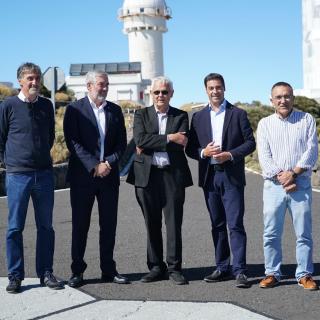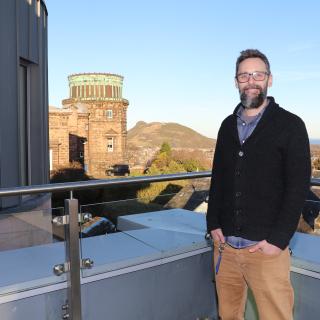It may interest you
-
Dr. Rubén Sánchez-Janssen has been announced as the new Director of the Isaac Newton Group of Telescopes (ING). Dr. Rubén Sánchez-Janssen will follow in the footsteps of Dr. Marc Balcells. Dr Sánchez-Janssen is an Astronomer and Project Scientist at STFC’s UK Astronomy Technology Centre (UKATC), where he leads the development of scientific instrumentation and facilities for ground- and space-based astronomy from the ultraviolet to the near-infrared, with a particular emphasis on future missions. He specializes in galaxy evolution, with particular focus on low-mass galaxies and star clusterAdvertised on
-
 An international team of astronomers has captured the most detailed and completed view yet of the mysterious filaments surrounding the giant galaxy M87. Using new observations from the Gran Telescopio Canarias and the Canada-France-Hawaii Telescope, the study reveals how these long, thread-like structures move, evolve, and interact with their galactic environment and the activity of the central supermassive black hole. These findings have just been published in Monthly Notices of the Royal Astronomical Society. M87: a giant galaxy and its mysterious threads M87, located about 55 millionAdvertised on
An international team of astronomers has captured the most detailed and completed view yet of the mysterious filaments surrounding the giant galaxy M87. Using new observations from the Gran Telescopio Canarias and the Canada-France-Hawaii Telescope, the study reveals how these long, thread-like structures move, evolve, and interact with their galactic environment and the activity of the central supermassive black hole. These findings have just been published in Monthly Notices of the Royal Astronomical Society. M87: a giant galaxy and its mysterious threads M87, located about 55 millionAdvertised on -
 El Lehendakari del Gobierno Vasco, Imanol Pradales Gil, y el presidente del Gobierno de Canarias, Fernando Clavijo Batle, han visitado las instalaciones del Observatorio del Teide del Instituto de Astrofísica de Canarias (IAC) donde han sido recibidos por el director del centro, Valentín Martínez Pillet que ha estado acompañado por personal científico y técnico. Esta visita subraya el interés y la apuesta compartida por ambos gobiernos por la excelencia científica y la colaboración en proyectos de alta tecnología como los que abandera el IAC desde Canarias. Con dos de los observatorios másAdvertised on
El Lehendakari del Gobierno Vasco, Imanol Pradales Gil, y el presidente del Gobierno de Canarias, Fernando Clavijo Batle, han visitado las instalaciones del Observatorio del Teide del Instituto de Astrofísica de Canarias (IAC) donde han sido recibidos por el director del centro, Valentín Martínez Pillet que ha estado acompañado por personal científico y técnico. Esta visita subraya el interés y la apuesta compartida por ambos gobiernos por la excelencia científica y la colaboración en proyectos de alta tecnología como los que abandera el IAC desde Canarias. Con dos de los observatorios másAdvertised on
